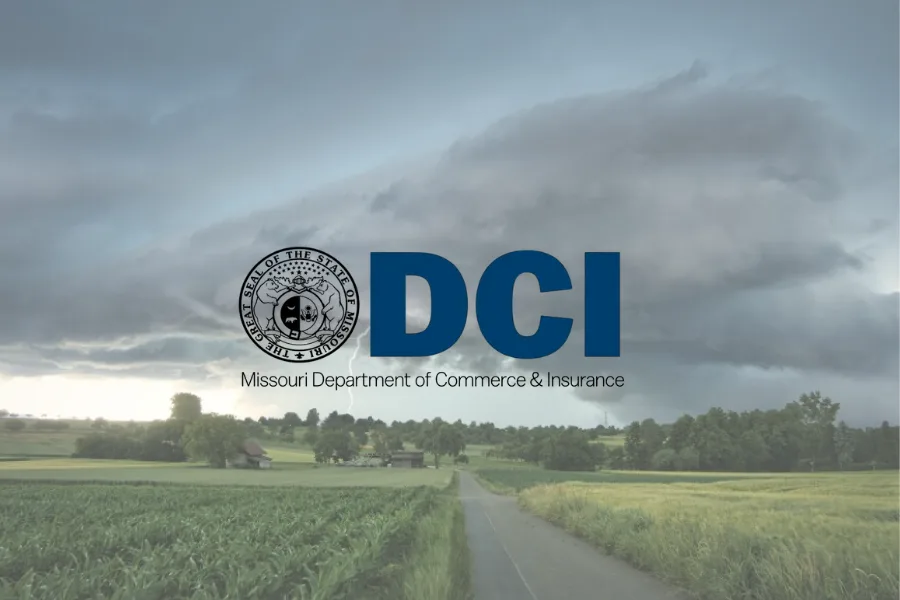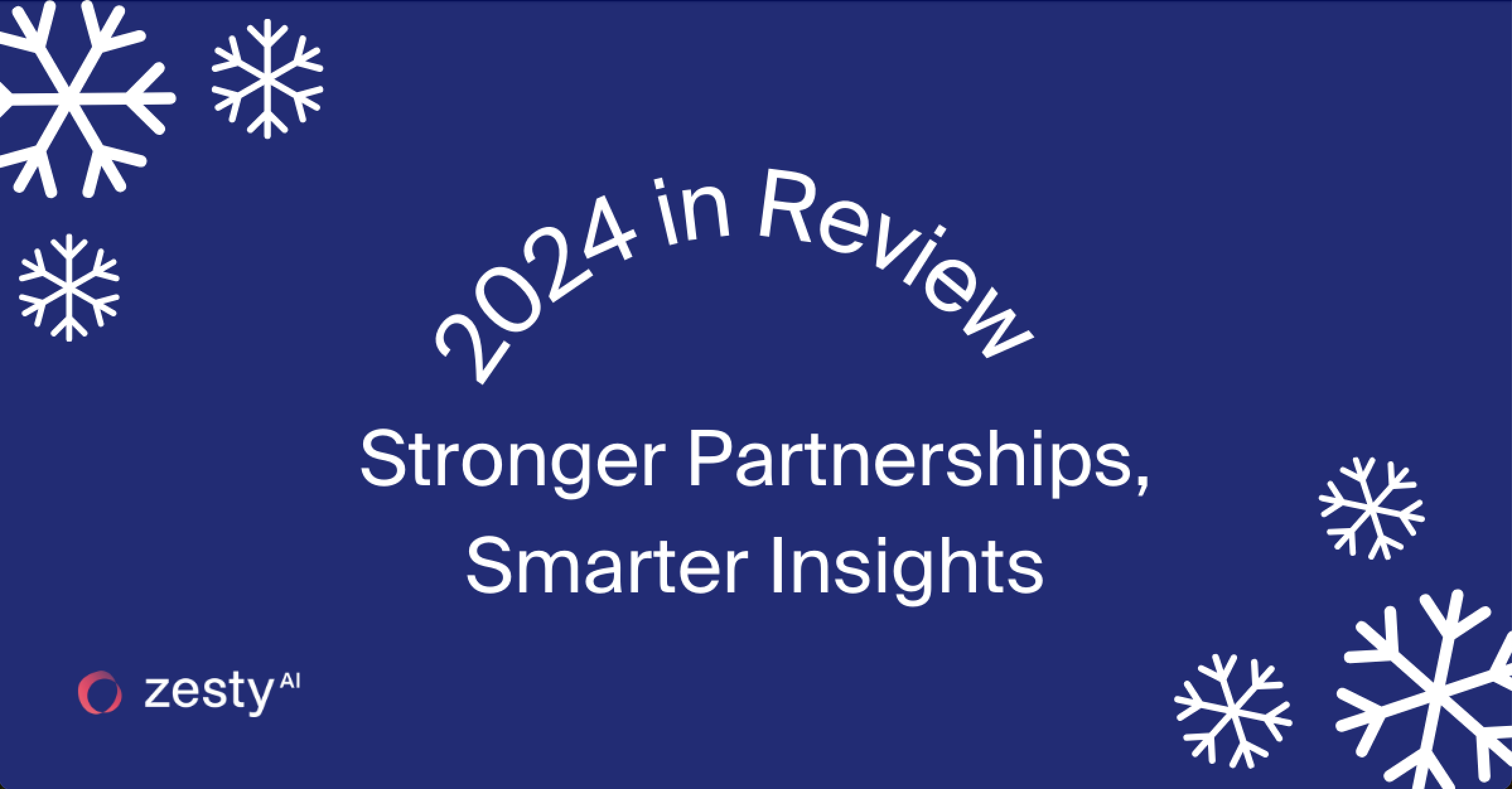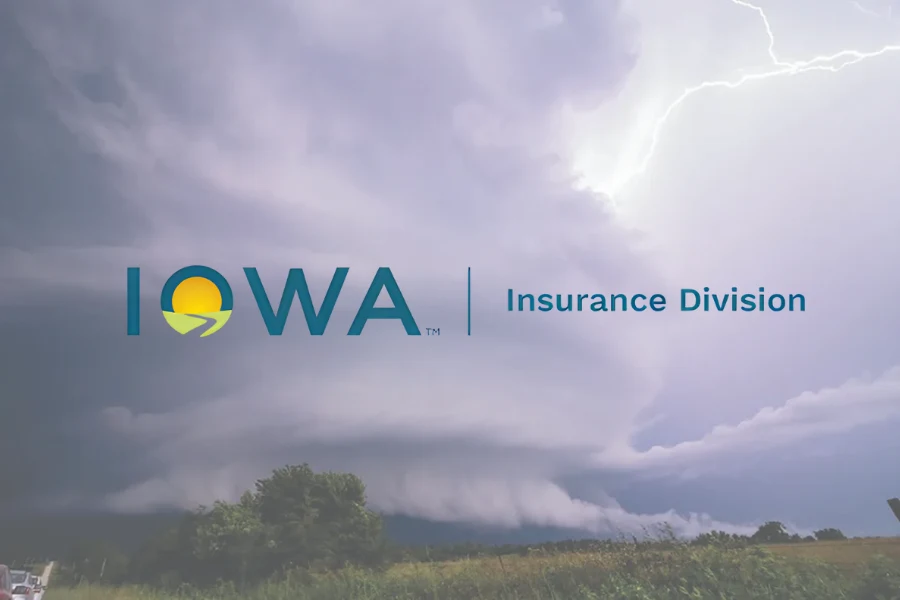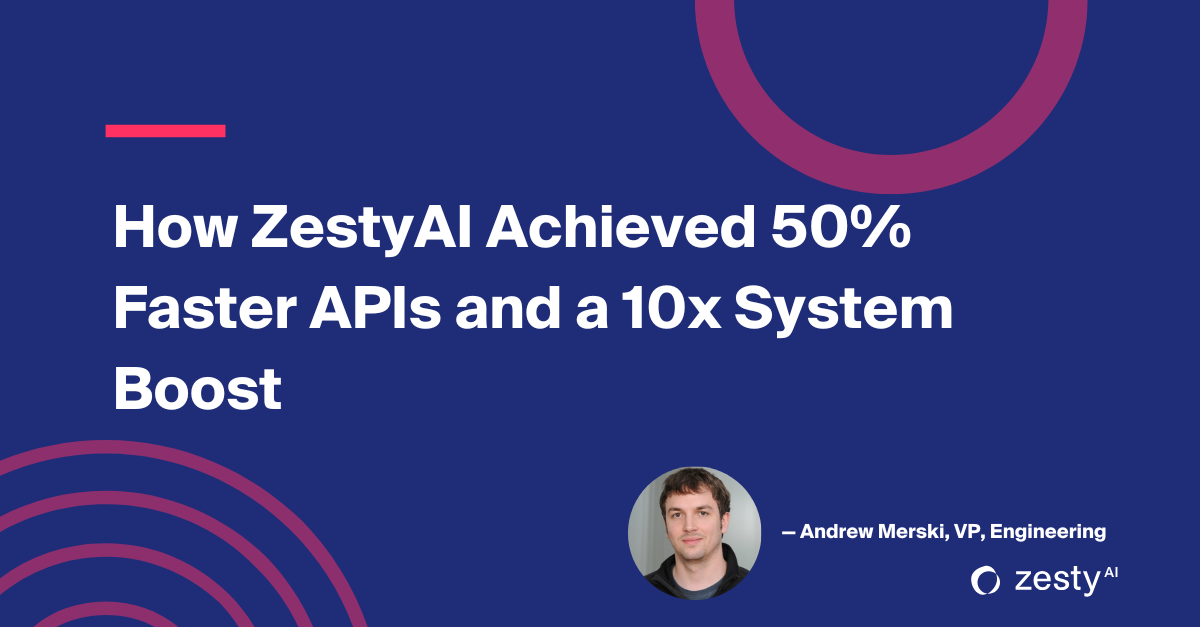Resources

Missouri Insurers Gain Precision with ZestyAI’s Approved Severe Storm Models
Regulatory approval equips Missouri insurers to tackle rising storm losses with AI-driven property risk solutions.
Missouri’s severe convective storms are growing more destructive, with hailstorm-related claims skyrocketing by 245% in 2024 alone. To address this rising risk, ZestyAI has secured regulatory approval from the Missouri Department of Insurance for its Severe Convective Storm suite, including Z-HAIL™, Z-WIND™, and Z-STORM™.
Missouri’s Rising Storm Losses
Missouri’s vulnerability to severe convective storms is well-documented. Since 1980, 82 weather events have each caused over $1 billion in damages. In 2024, a March hailstorm—dubbed the “Gorilla Hail” storm—resulted in nearly 7,000 claims, a dramatic increase from just over 2,000 hail claims the previous year.
How ZestyAI’s Models Make a Difference
ZestyAI’s Severe Convective Storm suite provides property-specific risk assessments, enabling insurers to predict and manage extreme weather impacts with precision.
Key Features:
- Z-HAIL™: Identifies a roof’s susceptibility to hail damage and estimates potential claim severity using property-specific attributes like roof complexity and historical losses.
- Z-WIND™: Predicts wind claim frequency and severity by combining climatology with property-specific data such as roof structure and damage history.
- Z-STORM™: Delivers granular risk scores for storm claim frequency and severity, factoring in climatology, building characteristics, and roof design.
These AI-driven models help insurers proactively manage storm-related risks, allocate resources effectively, and encourage policyholders to take preventive measures.
Empowering Insurers with Advanced Risk Insights
Bryan Rehor, Director of Regulatory Affairs at ZestyAI, said:
Missouri’s exposure to tornadoes, hail, and damaging winds makes advanced risk assessment tools essential. By streamlining the regulatory process, we enable insurers to focus on protecting policyholders while reducing losses.
With regulatory compliance and validated loss data at its core, ZestyAI’s suite enables insurers to:
- Enhance underwriting precision and optimize deductible strategies.
- Provide policyholders with actionable insights to reduce risks and prevent losses.
- Move beyond reactive damage assessments to proactive storm risk management.
Looking Ahead
ZestyAI’s Severe Convective Storm suite has already received regulatory approvals in Texas, Colorado, Illinois, Indiana, and Iowa, with additional filings in progress. By equipping insurers with AI-powered tools, ZestyAI is modernizing the way storm risks are assessed, ensuring communities and insurers are better prepared to weather the storm.

A ZestyAI Refresher: Timeless Insurance Meets Trustworthy AI
New to ZestyAI or need a refresher? Learn why nearly half of the top 100 U.S. insurers rely on our AI-powered platform to revolutionize property and climate risk management.
Who We Are: Revolutionizing Risk Management with AI
ZestyAI is the leading property and climate risk platform, leveraging advanced AI and data science to provide property-level risk insights to insurers across the United States. Our mission is to redefine how insurers assess and manage risk while fostering a healthier, more sustainable, and more affordable insurance market.
At its core, ZestyAI empowers carriers to assess risk with unmatched precision, aligning premiums with actual property-level data. Our data-driven recommendations help insurers improve underwriting, streamline operations, and optimize portfolios—all while ensuring transparency and regulatory compliance.
ZestyAI’s solutions are rigorously validated by state departments of insurance, including in California, Texas, and Colorado. Our wildfire risk model became the first to gain approval as part of a carrier rate filing from the California Department of Insurance (CDI), setting a benchmark for the responsible adoption of AI in the industry.
With over 200 billion data points analyzed and nearly 100% aerial imagery coverage across the contiguous U.S., ZestyAI transforms vast amounts of data into actionable intelligence. From roof conditions to vegetation density, our platform enables insurers to reduce loss ratios, improve profitability, and increase the availability of insurance to underserved markets.
Proven Performance in the Toughest Conditions
ZestyAI's AI models have been tested and trusted under the industry’s most challenging scenarios:
- Z-FIRE™: The gold standard for wildfire risk, adopted across all wildfire-prone markets in the U.S.
- Z-HAIL™: Predicts hail claim frequency and severity with up to 58X greater accuracy than traditional models, as validated by IBHS research.
- Z-WIND™ and Z-STORM™: Deliver granular risk assessments for wind and storm frequency and severity, with regulatory approval across several states.
- Z-WATER™: Our newest model predicts non-weather-related water damage claims using insights from property construction, local water systems, and environmental factors.
Powered by 30+ proprietary computer vision algorithms, our peril-specific models provide carriers with the flexibility to use ZestyAI’s risk scores or integrate detailed property insights directly into their own workflows.
The Origin of ZestyAI: A Bold Pivot
ZestyAI’s journey began not in insurance, but in clean energy. Founded as Powerscout, we made a pivotal shift in 2017 when the devastating California wildfires revealed a critical gap in how insurers assess risk. Recognizing the potential of our imagery and AI models to become a lifeline for carriers and communities alike, we refocused our mission. By 2018, ZestyAI was born, dedicated to revolutionizing insurance through AI-driven insights.
Why ZestyAI?
Today, our platform empowers carriers to achieve transformative outcomes:
- Set Precise Rates: Move beyond broad territory-based pricing to property-level assessments, attracting low-risk customers with precision pricing while helping high-risk properties mitigate exposure.
- Enhance Risk Selection: Leverage comprehensive risk profiles for smarter underwriting, optimizing combined ratios and profitability.
- Improve Product Fit: Tailor coverage options with appropriate deductibles and endorsements, reducing losses and improving customer satisfaction.
- Optimize Inspections: Direct resources to properties that need attention, reducing unnecessary on-site inspections and cutting costs.
- Streamline Operations: Automate approvals for low-risk properties, freeing underwriting teams to focus on complex cases.
- Optimize Portfolios: Reassess books of business to identify accumulated risks and adjust premiums or coverage based on real-time data.
At the heart of these capabilities is our commitment to delivering a 10X return on investment (ROI) for our customers. By combining precise risk assessment with actionable insights, ZestyAI helps carriers achieve measurable results.
Building a Healthier Insurance Ecosystem
ZestyAI’s impact extends beyond carriers—we’re reshaping the insurance ecosystem to be more accessible, equitable, and efficient.
- Fair Pricing: Align premiums with actual risk to attract low-risk customers while offering guidance for mitigating high-risk exposures.
- Proactive Risk Mitigation: Empower policyholders with tailored guidance, like improving roof conditions or clearing vegetation, to reduce exposure.
- Operational Efficiency: Streamline processes to lower costs and focus resources on the most impactful areas.
Leading the AI Revolution in Insurance
As climate risks grow more intense, insurers must adopt innovative tools to assess and mitigate these challenges. ZestyAI is at the forefront of this transformation, enabling carriers to not only adapt but thrive in an evolving market.
The future of insurance lies in AI-driven precision, and with ZestyAI, that future is already here.
Schedule a demo today to see how ZestyAI can transform your risk strategy in 2025.

2024 in Review
As we close out 2024, we’re taking a moment to reflect on a year defined by deeper partnerships, relentless innovation, and measurable progress in the insurance industry.
Watch the video message from our CEO, Attila Toth, to learn more about the milestones we achieved and what’s next for ZestyAI.
Strengthening Relationships
This year, we deepened our collaborations with existing partners and welcomed new customers across the country. Nearly half of the top 100 insurance carriers now trust ZestyAI to deliver precise, AI-driven insights that enhance underwriting, streamline operations, and address emerging risks in high-peril areas.
Innovation That Delivers Value
At ZestyAI, innovation is never just for its own sake—it’s about delivering actionable value that solves real-world challenges. In 2024, we launched:
- Z-WATER™: Our new model that predicts non-weather-related water damage claims, helping carriers identify and mitigate this growing risk.
- Roof Age: Leveraging historical imagery and building permit data to provide accurate roof condition insights for better underwriting and risk management.
We also delivered substantial enhancements to Z-PROPERTY™, our leading property insights platform:
- Increased Coverage and Improved Hit Rates: Ensuring more comprehensive and reliable property assessments.
- New Features: Including driveway condition insights and support for multi-structure properties, enabling insurers to prioritize resources and streamline inspections.
Tremendous Regulatory Momentum
This year brought significant progress in regulatory approvals, further validating ZestyAI’s solutions in key markets like California, Texas, and Colorado. Our models continue to set a benchmark for responsible AI adoption, ensuring insurers can confidently integrate advanced property risk insights into their workflows.
Delivering Performance Across Perils
ZestyAI’s AI-powered models continued to prove their value under the industry’s most challenging conditions:
- Z-FIRE™: Recognized as the gold standard for wildfire risk across the U.S.
- Z-HAIL™: Predicting hail claim frequency and severity with up to 58 times greater accuracy than traditional models.
- Z-WIND™ and Z-STORM™: Delivering granular risk assessments for wind and storm-related risks.
These innovations are helping insurers reduce loss ratios, improve profitability, and ensure coverage availability where it’s needed most.
Looking Ahead to 2025
As we move into the new year, ZestyAI remains committed to revolutionizing risk management through AI-driven precision and proven performance. We will continue to help insurers navigate emerging challenges, drive efficiency, and build a more resilient future for their policyholders.
From all of us at ZestyAI, thank you for being part of this journey. Wishing you a wonderful holiday season and a successful year ahead.

Now Streaming: Navigating California's Evolving Insurance Landscape
The California Department of Insurance (CDI) has introduced significant updates as part of its Sustainable Insurance Strategy. These new bulletins and draft regulations aim to accelerate regulatory approvals, embrace forward-looking models, and address critical reinsurance challenges.
But what do these changes mean for insurance carriers—and how can you prepare?
On January 29, 2025, we hosted a webinar, California’s Evolving Insurance Landscape: The Future of Insurance in the Golden State.
Designed for Legal & Compliance professionals, Product Managers, Underwriters, Actuaries, and Risk & Innovation leaders, the discussion featured expert insights from:
- Michael Peterson, Deputy Commissioner of Climate & Sustainability, California Department of Insurance
- Karen Collins, VP, Property & Environmental, APCIA
- Bryan Rehor, Head of Regulatory Affairs, ZestyAI
Missed the live event but want to gain actionable insights from industry leaders at the forefront of California’s insurance evolution? Watch on demand now!

ZestyAI’s Severe Convective Storm Models Receive Regulatory Approval in Iowa
Regulatory approval empowers Iowa insurers to tackle rising storm losses with AI-powered property risk models.
ZestyAI, the leading provider of AI-powered climate and property risk analytics solutions, has received regulatory approval from the Iowa Insurance Division for its Severe Convective Storm suite, including Z-HAIL, Z-WIND, and Z-STORM.
This approval marks a critical milestone in helping insurers address the growing challenges posed by severe weather in one of the Midwest’s most storm-affected states.
In 2024, Iowa experienced five billion-dollar severe weather events, with hailstorms driving billions in damages and insurance losses. In one instance, a hailstorm caused $2.4 billion in damage, underscoring the urgent need for innovative tools to assess and manage storm-related risks.
ZestyAI’s Severe Convective Storm suite delivers property-specific risk assessments, enabling insurers to predict and mitigate extreme weather impacts with precision. Designed with regulatory compliance at its core, Z-HAIL is validated using actual loss data and provides a clear breakdown of the top three risk drivers for each score. This transparency empowers insurers to make informed decisions and share actionable insights with policyholders.
By analyzing climatology, geography, and building characteristics, ZestyAI equips insurers to identify high-risk properties, allocate resources strategically, and encourage proactive risk-reduction measures among policyholders.
"This approval empowers our carrier partners to act quickly and confidently in addressing Iowa’s severe weather challenges," said Bryan Rehor, Director of Regulatory Affairs at ZestyAI.
"By streamlining subsequent filings, we help insurers save time and resources, ultimately making high-quality property insurance more accessible to Iowa homeowners."
ZestyAI’s Severe Convective Storm suite has already received approvals in other key hail belt states, including Texas, Colorado, Illinois and Indiana, with additional filings in progress. These models enable insurers to move beyond reactive damage assessments, improving their ability to assess and manage storm-related risks at a granular, property-specific level.
With this approval, ZestyAI continues to lead the charge in equipping insurers with the tools they need to navigate an era of climate uncertainty, ensuring communities and insurers alike can better weather the storm.

Redesigning Our ML Infrastructure: 50% Faster APIs and 10x the Data Processing Power
Discover How the 'Monster Pod' Revolutionized Our Approach to Scaling Machine Learning Models.
Scaling a complex system of machine learning models while delivering real-time insights is no small feat. ZestyAI’s engineering team reimagined its architecture to overcome these challenges, leveraging NVIDIA’s Triton Inference Server and introducing the “Monster Pod.” This transformation halved API response times, increased throughput by 10x, and cut cloud costs by 75%. Dive into how strategic experimentation and innovative design unlocked efficiency and positioned ZestyAI for future growth.
By Andrew Merski, VP, Engineering
The Challenge: A Complex and Scaling System
Business Context
At ZestyAI, we deliver critical insights to insurance clients using machine learning models. Our API processes a significant volume of data, including imagery, geolocation, and structured data, to produce real-time results. The complexity of each request places immense demands on our infrastructure:
- Synchronous API Calls: Each request must be processed in real-time, with all insights delivered back to the client in a single response. Low latency is non-negotiable, as our clients’ workflows rely on immediate feedback.
- Multiple ML Models Per Request: Each request may invoke up to 30 ML models, ranging from computer vision models analyzing aerial imagery to models synthesizing geospatial and tabular data.
- Growing Model Catalog: The catalog of ML models we deploy continues to expand, driven by both customer needs and internal innovation. Each new model adds additional complexity to the system.
- Exceptional Reliability: Our clients in the insurance sector demand a system that operates flawlessly, with uptime and accuracy critical to their decision-making processes.
Previous Architecture: A Decentralized Model
In our previous system, each ML model operated as an independent microservice. Each model scaled independently, and each instance required its own GPU. While functional, this architecture introduced critical issues:
- Resource Underutilization: GPUs were underutilized, with non-GPU tasks consuming significant time.
- Scaling Challenges: Periods of high API traffic put additional strain on system components, leading to some inefficiencies.
- Capacity Limitations: The previous architecture had constraints that limited scalability, which could have restricted future growth.
This architecture also resulted in significant operational complexity. Each model’s independent deployment meant substantial manual effort in testing, scaling, and troubleshooting. Cloud costs also escalated rapidly as new models were added, creating diminishing returns for each improvement in service quality.
The Solution: A Centralized Architecture with Triton
Faced with scaling challenges and rising customer demand, we reimagined the entire architecture. At the heart of the solution was NVIDIA’s Triton Inference Server, a tool designed for efficient multi-model serving.
Why Triton?
Triton enabled:
- Shared GPU resources across models.
- Ensemble models to define workflows using configuration rather than code.
- Extensive benchmarking tools for performance optimization.
- Support for various backends, including Python and Pytorch.
However, Triton required significant investment in layers of customization to meet our needs. Its low-level interface and lack of native autoscaling demanded a tailored implementation.
New Architecture: The Monster Pod
To maximize Triton’s potential, we introduced the “Monster Pod,” consolidating all models and supporting microservices into a single Kubernetes pod. Key features included:
- Single-host model serving: All models resided in a unified Triton instance.
- Integrated workflow management: The workflow orchestrator and other microservices were co-located with Triton.
- Streamlined scaling: Each pod functioned as an independent unit, simplifying horizontal scaling.
This “Monster Pod” approach offered numerous benefits:
Improved Resource Utilization
- Maximized GPU usage by serving multiple models per instance.
- Reduced the overhead associated with multiple nodes and microservices.
Simplified Testing and Benchmarking
- Each pod contained all necessary components, enabling comprehensive testing in isolation.
- Benchmarking provided clear insights into throughput and resource requirements.
Reduced Scaling Overhead
- Eliminated dependency on Istio for internal traffic management.
- Simplified node provisioning and scheduling.
Predictable Costs
- Each pod corresponds to a fixed node cost, allowing accurate cost planning.
Lessons Learned
This project revealed critical insights that extend beyond Triton or even ML systems:
1. The "Microservices vs. Monolith" Debate Isn’t Binary
Architectural decisions don’t have to be all-or-nothing. For instance, while our deployment consolidated models into a single pod, we retained microservices for other aspects of the platform. Evaluating “single vs. many” decisions at multiple levels allowed us to optimize each layer independently.
2. Understand the Bottlenecks Before Designing Solutions
Identifying the root causes of inefficiency—scaling overhead, resource underutilization, network traffic—helped us design a system that addressed these challenges holistically rather than incrementally.
3. The Power of Consolidation
Integrating multiple components into a single deployment reduced complexity, improved performance, and simplified scaling. This approach may not suit every scenario, but in our case, it delivered transformative results.
4. Be Open to Temporary Solutions (Flexibility Leads to Innovation)
The “Monster Pod” started as a quick workaround but became a permanent fixture due to its outsized impact. Being open to experimentation unlocked unexpected benefits, such as easier resource planning and reduced operational complexity.
Business Impact
Rebuilding our ML inference platform was a bold move that paid off. The new architecture produced dramatic improvements across key metrics:
- Latency: API response times were halved.
- Capacity: System throughput increased by 10x, eliminating the previous capacity ceiling.
- Cost Efficiency: Cloud costs for model serving dropped by 75%.
These gains position us to scale with growing demand while maintaining industry-leading performance. Additionally, the simplified architecture has freed up engineering resources to focus on innovation rather than maintenance.
While Triton Inference Server played a critical role, the real success lay in our architectural decisions and willingness to rethink the status quo. This project underscores the value of experimentation and the importance of tailoring solutions to meet unique challenges.
The lessons learned from this journey will continue to inform our approach to system design and scalability as we look ahead. The Monster Pod has not only transformed our current capabilities—but has also set the stage for future growth and innovation.
For a deeper dive into the technical details, check out Andrew Merski’s original blog on Medium.
Ready to see how ZestyAI works on your book of business?
Tell us a little about your needs. We'll show you how we reduce losses and help you price with precision.








